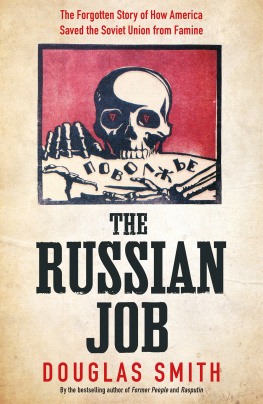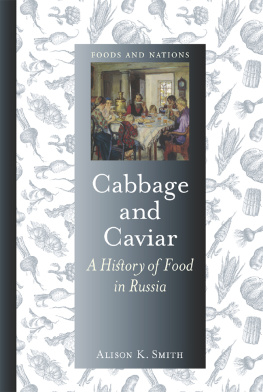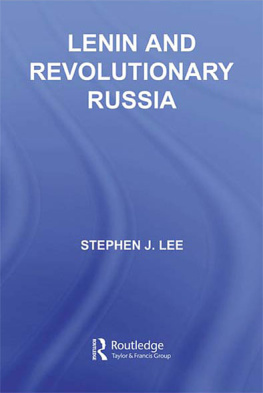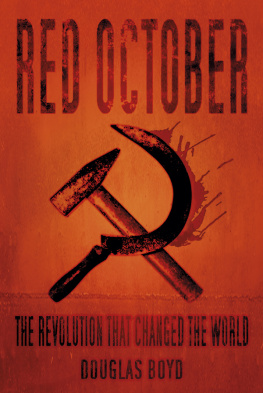To Stephanie
It burns and scorches, the midday heat,
All life here has died. In slumbering peace
The earth lies mute, guarding its secret.
Not a sound, save the occasional whirlwind.
A column of fire, rushing over the field,
Rises heavenward and vanishes like smoke.
Severe and stern the infinite sky:
Its empty, the gods have all died
And are now deaf to the suffering of men.
The earths parched: no dew, no rain.
Our fertile fields, vast like the sea,
Whose bounty once brought comfort,
Fill our hearts with joy no more.
Death stalks the land, bringing with it endless sorrow.
A. GELEZHE, BUGURUSLAN, RUSSIA, 1922
Trying to kill people may sound more exciting than trying to keep them alive, but dont you ever believe its so.
GEORGE McCLINTOCK, AMERICAN RELIEF ADMINISTRATION, SAMARA, RUSSIA, 1922
CONTENTS
Guide

PROLOGUE:
MR. WOLFES HORRIFYING
DISCOVERY
T HE STORIES BEGAN TO APPEAR in the Soviet press in the autumn of 1921, each one more gruesome than the last. There was the woman who refused to let go of her dead husbands body. We wont give him up, she screamed when the authorities came to take it away. Well eat him ourselves, hes ours! There was the cemetery where a gang of twelve ravenous men and women dug up a fresh corpse and devoured the cold flesh on the spot. There was the man captured by the police after murdering his friend, chopping off his head, and selling the body at a street market to a local restaurant owner to be made into meatballs, cutlets, and hash. And then there was the desperate mother of four starving children, saved only by the death of their sister, aged thirteen, whom the woman cut up and fed to the family.
The stories seemed too horrific to believe. Few could imaginge a hunger capable of driving people to such acts. One man went in search of the truth. Henry Wolfe, a high-school history teacher from Ohio, spent several weeks in the spring of 1922 traveling throughout Samara Province, several hundred miles southeast of Moscow on the Volga River, intent on finding physical evidence of cannibalism. In the district of Melekess, officials told him about a father who had killed and eaten his two little children. He confessed that their flesh had tasted sweeter than pork. Wolfe kept on searching, and eventually found the proof he had been looking for.

At first glance, it appears to be an unremarkable photograph of six individuals in winter dress: two women and four men, their expressions blank, betraying no particular emotion. But then our eyes catch sight of the grisly objects laid out across a wooden plank resting unevenly atop a pair of crates. There are two female heads, part of a rib cage, a hand, and what appears to be the skull of a small child. The adult heads have been cracked open and the tops of the skulls pulled off. Along with the human flesh, cannibals had feasted upon the brains of their victims.
Wolfe stands second from the right, surrounded by Russian interpreters and Soviet officials. Theres a faint look of satisfaction on his face at having accomplished his goal. Here, at last, was the incontrovertible proof he had set out to find.
Wolfe may have found the answer he had been seeking, but to us, a century later, the photograph raises a number of questions. What was Wolfe doing in Russia in the first place? What had led this young American to a remote corner of the globe, half a world away, in search of such horrors? And why would the Soviet government, the newly formed socialist state of Vladimir Lenin and his Bolshevik Party dedicated to world revolution and the overthrow of the capitalist order, have helped Wolfe to uncover, much less document and publicize, its miserable failure at feeding its own people?
If we look closely, a clue to answering these questions is to be found in the three letters stamped on the box in the center of the frame: ARA.
Facing one of the worst famines in history, the Soviet government invited the American Relief Administration, the brainchild of Herbert Hoover, future president of the United States, to save Russia from ruin. For two years, the ARA fed over ten million men, women, and children across a million square miles of territory in what was the largest humanitarian operation in history. Its efforts prevented a catastrophe of incalculable proportionsthe loss of millions of lives, social unrest on a massive scale, and, quite possibly, the collapse of the Soviet state. Having completed their mission by the summer of 1923, the Americans packed up and went home. Before the ARA left, the leaders of the Soviet government showered the organization with expressions of undying gratitude and promises never to forget Americas help.
An act of humanity and benevolence, Machiavelli wrote in his Discourses on Livy, will at all times have more influence over the minds of men than violence and ferocity. Machiavelli was wrong. The Soviet government quickly began to erase the memory of American charity, and what it could not erase, it sought to distort into something ugly. But it wasnt just the Russians. Back in the United States, where Americans had followed the work of the ARA with great interest, knowledge of Hoovers achievement faded. By the time Hoover was voted out of office a decade later, during the Great Depression, the story of this extraordinary humanitarian mission had been forgotten. Now, almost a hundred years later, few people in America or Russia have ever heard of the ARA. The Russian Job seeks to right this wrong.
1921
RUSSIAN APOCALYPSE
T HE RAINS DIDNT COME IN THE SPRING OF 1920 . It was unusually hot, and by planting season the ground had been baked hard. The dry weather carried on throughout the summer and into the autumn. The harvests proved small. That winter saw scant snow covering the land, followed by a second parched spring. The worst drought in thirty years gripped much of Soviet Russia in its deadly grasp: nearly the entire length of the Volga River Basin, from Nizhny-Novgorod in the north all the way to the Caspian Sea in the south, and from Ukraine in the west to the edge of the Ural Mountains in Asia. Villages were starving. Over a hundred thousand peasants left their homes in search of food. Russia was facing a catastrophe.
Life for the Russian peasant had never been easy, even after the end of serfdom in 1861. The peasants eked out a meager existence not much beyond subsistence levels. Farming methods were primitive, the land was overcrowded, taxes were heavy. In the late 1880s, the Russian state began a massive program of industrialization, to be financed by the sale of grain abroad. Ne doedim, no vyvezemwe may not eat enough, but well exportbecame the motto of the effort to bring tsarist Russia up to the modern lifestyle of the West. Tax collectors were sent out into the countryside to redouble their efforts; peasant farmers were forced to hand over an ever larger share of their rye, wheat, and barley. Between 1881 and 1890, the average yearly export of major grains almost doubled.















